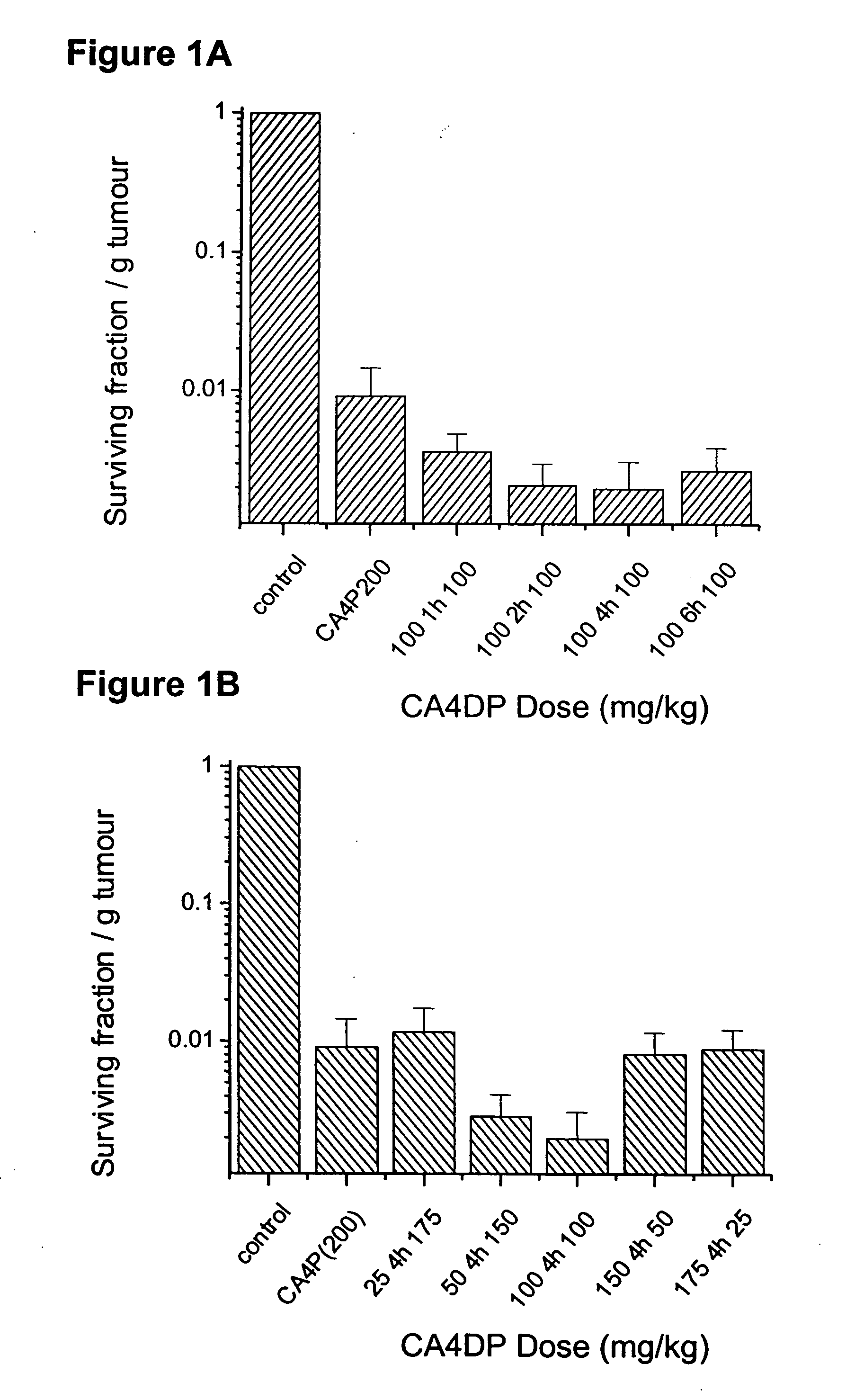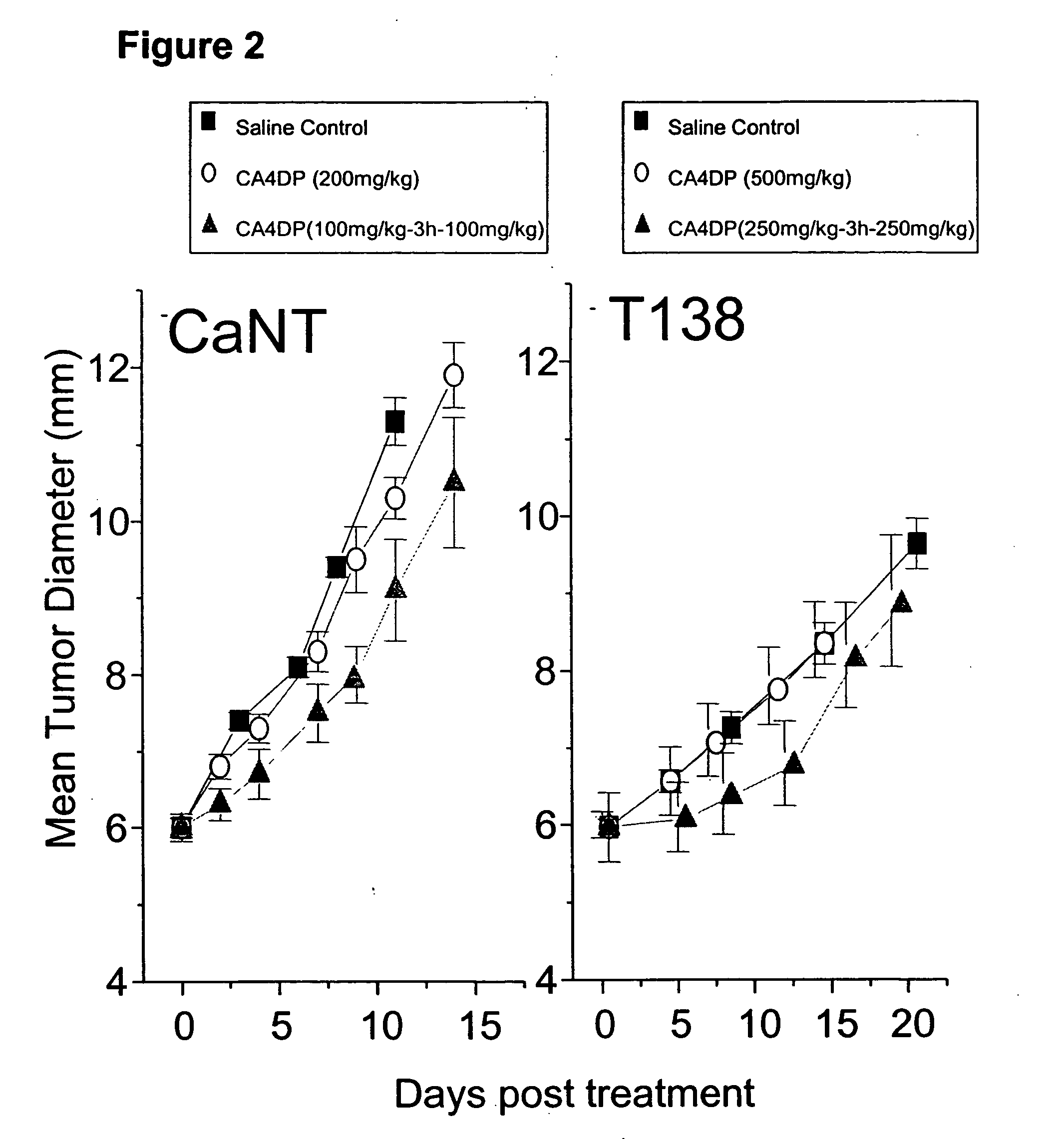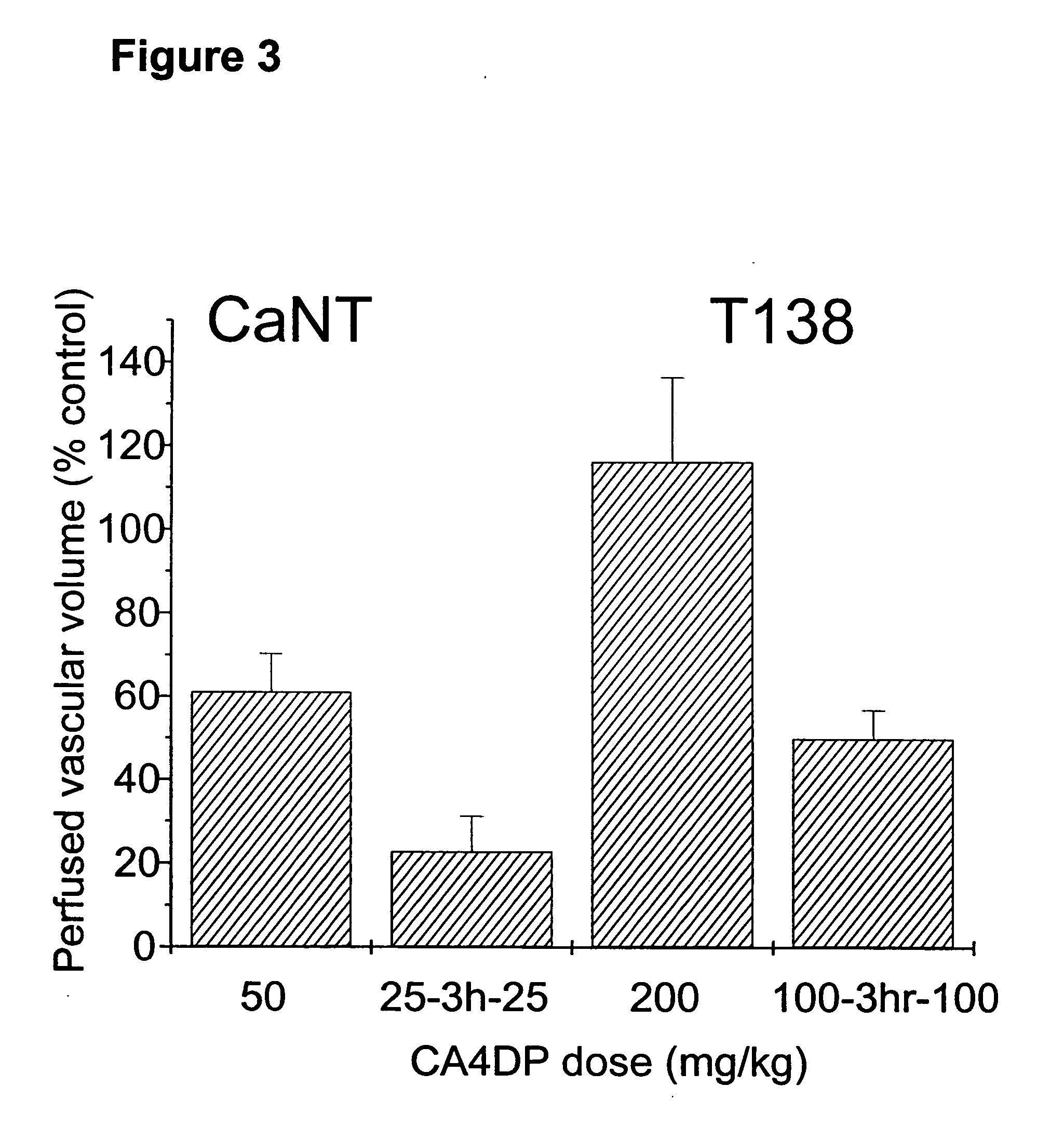Method of administering split doses of a vascular targeting agent
a vascular targeting agent and split dose technology, applied in the field of split doses of vascular targeting agents, can solve the problems of avalanche of ischaemic tumor cell death, unable to effectively treat patients, and unable to achieve effective treatment, so as to achieve less effective effect and more cell killing
- Summary
- Abstract
- Description
- Claims
- Application Information
AI Technical Summary
Benefits of technology
Problems solved by technology
Method used
Image
Examples
example 1
Effect of Split VTA Dosing on Tumor Cell Survival
Methods and Materials
[0036] To compare the anti-tumor effect of single and divided VTA dose scheduling, the survival of tumor cells isolated from a treated CaNT tumor-bearing animals was assessed by an in vitro clonogenic (colony-forming) assay, as described previously (Chaplin et al., Anticancer Research, 1999, 19: 189-196). Tumors were excised 18-24 h after CA4P injection. Two tumors were combined for each data point, weighed, minced with scissors and then disaggregated for 1 hour at 37° C. in an enzyme cocktail of 1 mg / ml pronase, 0.5 mg / ml DNase and 0.5 mg / ml collagenase. Following digestion, samples were passed through a 25G needle and a 35 μm filter to obtain a single cell suspension. Haemocytometer counts of trypan-blue excluding cells were made and known numbers of viable cells added to a feeder layer of heavily irradiated V79-379A Chinese hamster cells. After 7-10 days incubation, colonies were fixed, stained with methylen...
example 2
Effect of Split VTA Dosing on Tumor Growth Delay
Material and Methods
[0038] The anti-tumor effect of split dosing therapy was also assessed by an analysis of tumor growth delay in both CaNT and T138 tumor-bearing mice. For experiments involving the CaNT, dose groups comprised 5 to 6 animals, whereas for the T138, 10 to 15 animals were used. Following initial drug treatment, tumor growth was determined by measuring the diameter of each tumor in 3 orthogonal orientations two or three days each week.
Results
[0039] The results of split dose therapy on tumor growth delay are illustrated in FIG. 2. As in Example 1, equal split dose therapy resulted in an enhanced tumor response over a single dose of CA4DP. This was apparent in the CaNT mice, where a single 200 mg / kg dose of CA4DP was compared with two equal doses of 100 mg / kg separated by a time interval of 3 hours. A single dose of CA4DP dose did not delay growth relative to control, while split dose therapy delayed tumor growth for ...
example 3
Effect of Split VTA Dosing on the Vascular Perfusion of Tumors
[0040] The effect of VTA dose splitting on the tumor vascular response was also investigated in both CaNT and T138 tumor types, by measuring the functional vascular volume at 24 hours following treatment with single or split doses of CA4DP. Functional vascular volume is defined as the volume of tumor tissue perfused by tumor blood vessels, and is measured using the fluorescent DNA-binding dye Hoechst 33342 (Sigma-Aldrich Company Ltd., Dorset, UK) (Smith et al, British Journal of Cancer, 1988, 57: 247-253). The dye was dissolved in 0.9% saline at 6.25 mg / ml and injected i.v. at a dose of 10 mg / kg at 24 hours post-treatment. Tumors were excised and frozen 1 minute later. Sections were cut at three levels and observed under UV illumination. Functional vessels were identified by the fluorescent outline of perivascular tissue and vascular volumes were determined using a random point scoring system based on that described by C...
PUM
| Property | Measurement | Unit |
|---|---|---|
| Time | aaaaa | aaaaa |
| Time | aaaaa | aaaaa |
| Time | aaaaa | aaaaa |
Abstract
Description
Claims
Application Information
 Login to View More
Login to View More - R&D
- Intellectual Property
- Life Sciences
- Materials
- Tech Scout
- Unparalleled Data Quality
- Higher Quality Content
- 60% Fewer Hallucinations
Browse by: Latest US Patents, China's latest patents, Technical Efficacy Thesaurus, Application Domain, Technology Topic, Popular Technical Reports.
© 2025 PatSnap. All rights reserved.Legal|Privacy policy|Modern Slavery Act Transparency Statement|Sitemap|About US| Contact US: help@patsnap.com



